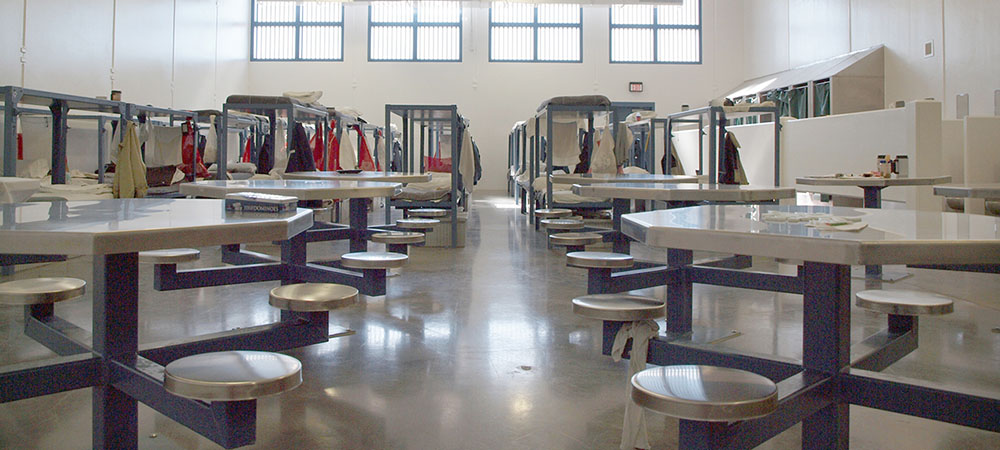
(Photo: H. Michael Karshis/Flickr)
As the country continues to come to terms with systemic racism within law enforcement it may be important to bring nuance to the discussion. Perhaps the better way is to delve into criminal justice systems to find out how to make them more efficient and equitable.
Four California counties, Riverside, San Bernardino, Santa Cruz and El Dorado have done just that. These counties are using data to gain greater knowledge about the make-up of their jail and how justice system practices contribute to overcrowding.
When AB 109 became law in 2011, the burden of incarceration shifted from the state to the counties. Soon, they were faced with overcrowded jails, lawsuits surrounding the care of inmates and budget shortfalls tied to increased incarceration rates. Counties began building more jails and looking for better solutions. As one former county leader said, “we can’t build our way out of this.”
In 2014, CA FWD created the Justice System Change Initiative (JSCI) to give counties the tools to change their criminal justice systems using data driven evidence. JSCI employed a team of subject matter experts to collect and evaluate data, which can then be used when making fiscal and policy decisions. The cornerstone of the work is the Jail Utilization Study, a deep dive into a county’s jail population.
“By conducting jail studies, we’ve found that counties have little information about the individuals in jail,” said CA FWD’s JSCI Data Analyst Kevin O’Connell. “They haven’t been tracking how a person got there, whether through a new crime or technical violation, or how many times they’ve been in and out of jail.” The studies also revealed other important contributors to jail populations including how many inmates are living with mental illness and/or substance abuse and how many times an individual has cycled through jail.
Once the data was revealed, the counties had greater knowledge about what factors impacted their jail populations. With the information in hand, they were able to make better informed decisions about policies and resources.
In a deeper look at the work, CA FWD released “Improving Justice System Interventions” a brief providing insights on the lessons learned and best practices by the initiative, including:
- At any given time, nearly half of individuals in county jail are there because they broke rules (probation violations, warrants, and court commitments), not laws. County criminal justice systems can dramatically lower this number by collaborating between departments to create programs that lower reoffending rates. These tactics can also maintain public safety, maximize public health and address issue of racial disparities among the formerly incarcerated.
- Understanding the jail population can help governments be better stewards and direct more resources towards other public priorities such as proven mental health care interventions that prevent crime.
- Evidence-based best practices can assist counties in making policy decisions that can lead to lower incarceration rates and fewer racial disparities in criminal justice while keeping communities safer.
- Government entities must emphasize and implement cross-system collaboration for a more equitable criminal justice system.
“If you have data, data will make the decision for you,” said Riverside County Chief Probation Officer Mark Hake. “It just allows us to more effectively manage the resources that we have. It allows us to target the specific problem areas or it allows us to better focus resources where they’re most needed.”
The jail study data prompted individual county agencies to collaborate. Before the studies, it was common for county departments to work in siloes. The data revealed that many incarcerated individuals would be better served through a cross-section of county departments.
The jail data are also valuable to the counties in other ways. By identifying the reasons individuals end up in jail either through a new crime or a side door, identifying low-risk and high jail utilizers, counties can make better informed decisions on where to put its resources. For some individuals, incarceration is not a good option and it is the most expensive. Diversion and reentry programs that focus on successful outcomes cost counties less and are a better use of taxpayer money.
The Jail Utilization Study data can also help counties identify areas where diversion is a better course of action. For instance, providing drug treatment services to an individual who has cycled in and out of jail or treating a person with mental illness who just needs to stay on his medication, not only saves the county the costs of incarceration, but also allows the individual to participate in society and pay taxes. This allows the counties to be better stewards of taxpayer money.
Riverside, San Bernardino and Santa Cruz are continuing the work CA FWD’s JSCI team started. Riverside County has staff dedicated to justice system change and is committed to refreshing the data to continuously improve. San Bernardino has a data analyst on staff who will update the jail data and delve more deeply into the numbers to discover new areas for improvement.
Knowing who is in jail, why they are there, how long they stay and how often they return is critical. Counties need this data to allocate resources, create cross-system collaborations and access state and federal funding to work toward lowering incarceration rates, solving local budget issues, while maintaining public safety.
To read “Improving Justice System Interventions,” click here.
To learn more about these efforts, join us on February 18 at 11 a.m. for a webinar on Improving Justice System Interventions, a part of our Building Equitable Economies webinar series.

